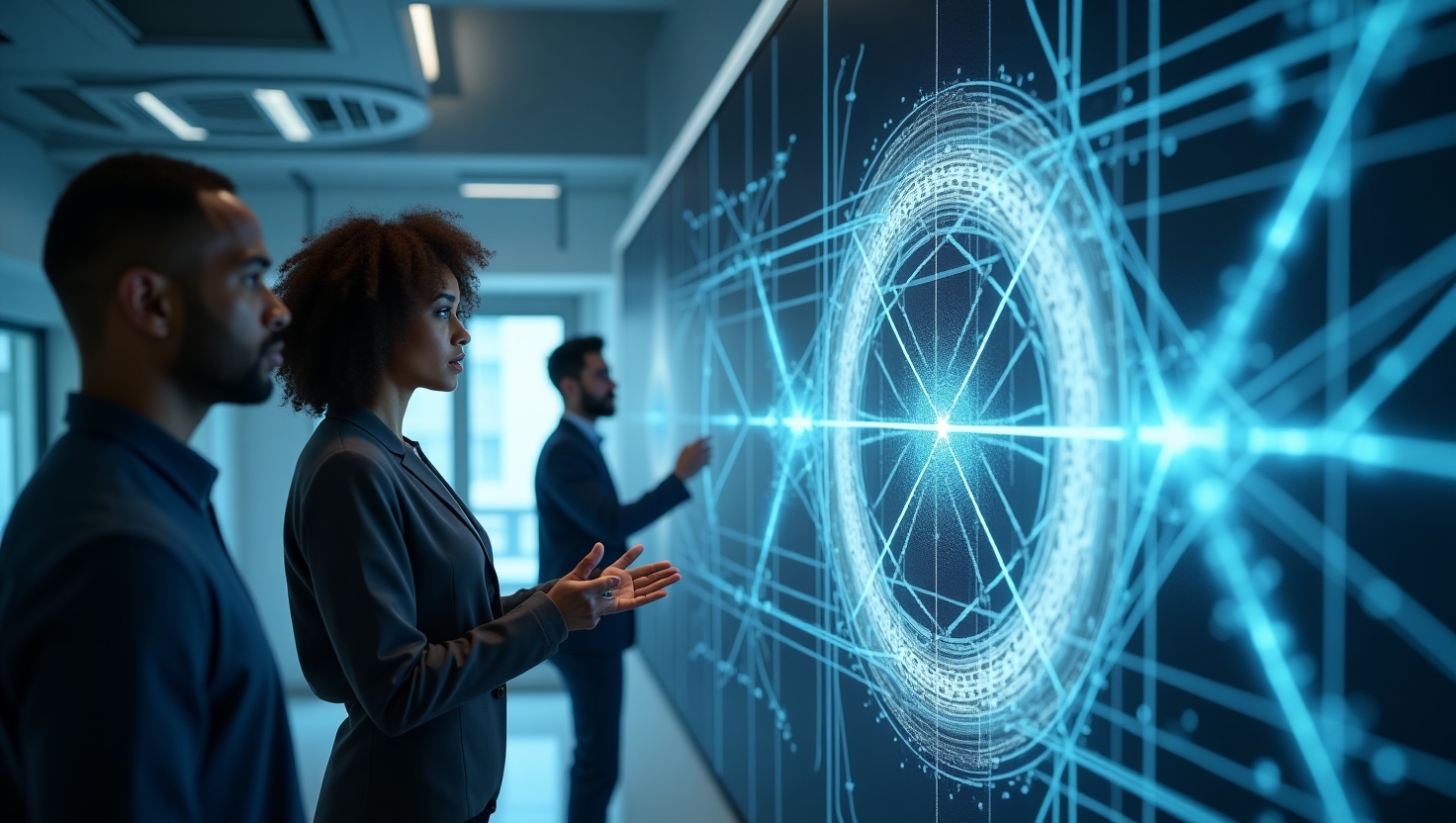6D Beam Reconstruction: The Future of Particle Diagnostics
Introduction
In the cutting-edge realm of accelerator technology, precision and accuracy in beam diagnostics have taken center stage. One of the most transformative innovations in this field is 6D beam reconstruction, an approach that allows for a more comprehensive understanding of particle beams by reconstructing their six-dimensional phase space. This technique is paramount for optimizing the performance and reliability of particle accelerators, pivotal in both scientific research and industrial applications.
Advancements in AI in physics and machine learning are the driving forces behind this evolution. By integrating these technologies, researchers can overcome previous limitations and refine the precision of 6D beam reconstruction, thereby revolutionizing particle diagnostics. This blog post dives into the intricacies of this process, exploring the contemporary trends and potential future directions.
Background
Beam diagnostics serve as the linchpin in the functionality of particle accelerators. Precision in measuring the transverse and longitudinal parameters of a beam is essential for adjusting and controlling accelerator operations. However, the process is not without its challenges, primarily due to high-dimensional data involved, which require sophisticated analysis techniques to decode.
Herein lies the significance of 6D beam reconstruction. In the context of a particle beam, the six dimensions typically refer to the three spatial coordinates and their respective momentum components. Gathering and analyzing this information accurately poses a significant challenge due to the vast data arrays involved and the intricate parameter interdependencies.
Normalizing flows and maximum entropy reconstruction are crucial methods aiding this complex task. Normalizing flows offer a flexible approach to modeling high-dimensional data, thus allowing for consistent and scalable analysis. Meanwhile, maximum entropy principles help in ensuring the most unbiased probability distribution given the known data, making it especially valuable in scenarios where direct measurements are sparse or indirect.
Current Trends in 6D Beam Reconstruction
The application of AI in physics is catalyzing unprecedented improvements in beam diagnostics. Machine learning models, particularly those employing normalizing flows, are playing pivotal roles. These sophisticated algorithms provide insights into the intricate relationships within data, allowing for more accurate modeling of the beam’s trajectory and properties.
Normalizing flows stand out among modern techniques due to their ability to adapt dynamically to incoming data patterns, offering a seamless integration into existing systems. According to recent findings, these methods achieve consistency with traditional maximum entropy solutions while providing enhanced flexibility and efficiency, which are of paramount importance in high-stakes environments like particle accelerators (source: HackerNoon).
Moreover, the role of generative models is noteworthy, as they simulate realistic particle conditions and facilitate adaptive learning processes. The equilibrium achieved via these models, as evidenced by the work of Tomography and Dr. One Ms. Hacker, underscores the effectiveness of computational intelligence in refining particle diagnostics.
Insights from Recent Research
Recent studies shed light on significant progress in 6D beam reconstruction methodologies. For instance, investigations by Tomography and Dr. One Ms. Hacker highlight critical breakthroughs with maximum entropy reconstruction and generative models (source: HackerNoon). Their research indicates that \”Ment-flow achieves consistency with MENT solutions,\” emphasizing the accuracy and reliability improvements achievable through these advanced techniques.
An example that illustrates the practicality of these advancements is the analogy of a jigsaw puzzle. Just as each piece in a puzzle must be correctly placed to complete the image, each datum in 6D beam reconstruction contributes to an accurate overall picture of beam dynamics. This kind of precision was previously unachievable without the current AI and machine learning tools.
The Future of 6D Beam Reconstruction
Looking forward, the ongoing integration of AI and machine learning into particle diagnostics is set to redefine accelerator technology. Potential improvements in accelerator components, informed by AI-driven insights, are expected to enhance operational efficiency, reduce downtime, and optimize energy consumption.
One foreseeable development is the real-time adaptation of accelerator settings based on live 6D beam data, dramatically enhancing the flexibility and responsiveness of facilities. Additionally, continual advancements in high-dimensional data analysis will likely enable deeper explorations into fundamental physics, potentially paving the way for groundbreaking discoveries.
Call to Action
As we continue to witness the transformative impacts of 6D beam reconstruction, staying abreast of emerging trends is crucial for researchers, engineers, and industry stakeholders. Delving into detailed resources on normalizing flows and allied technologies will expand your understanding and preparation for future challenges in particle diagnostics.
Explore the future of particle accelerator technology and its symbiosis with AI by perusing related articles, such as those discussed here, to gain a comprehensive overview of the exciting advancements on the horizon.
